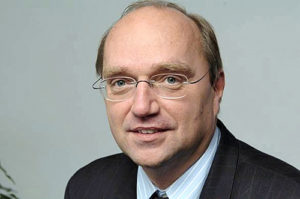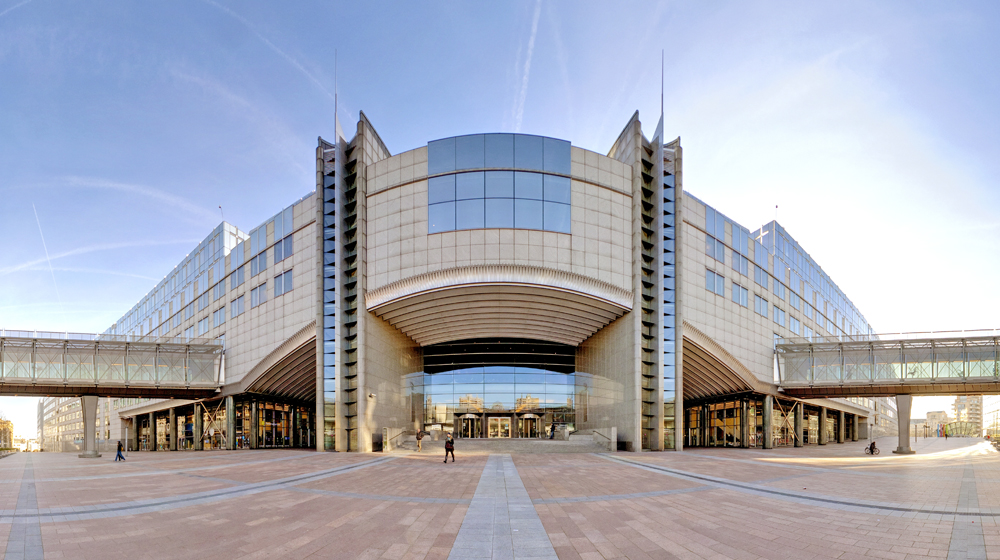
Klaus-Dieter Borchardt has been a civil servant at the European Commission for almost 30 years. For the past four years, he has been the Director of the Internal Energy Market in DG Energy.
“As a lawyer by training it was not easy to get into such a complex and technical policy area, but I liked it from the very first moment because it is a policy under full development where stakeholders and policy makers have to work hand in hand to achieve positive results for all. The Directorate Internal Energy Market consists of four departments: infrastructure, wholesale markets for electricity and gas, retail markets and security of supply,” Borchardt says.
The EU’s internal electricity market is the world’s largest international electricity market. The market has undergone quite extraordinary changes over the last few years.
“Importantly, we have been able to shift from a highly centralized and concentrated electricity system to one where competition and market integration are becoming the new normal. This is the result of three consecutive legislative packages that ultimately have boosted the overall security and competitiveness of our energy systems. This would not have been possible without the active participation of both national regulators and Transmission System Operators (TSOs), who have come a long way in their respective roles. Being today endowed with a ‘European house’ for regulators such as ACER should not be taken for granted, either. Overall, we should take pride in having created a strong foundation upon which to build for the future,” Borchardt continues.
Renewable energy and active consumers
The energy market is in a big transition to a CO2-free energy system, which is changing the roles of various stakeholders.
“We should do our best to bring as many stakeholders and consumers on board the energy transition. On the consumer side, our newly introduced set of rights aim at changing an older paradigm where consumers were seen as merely passive recipients of electricity. This is no longer either technologically or economically viable. On the back of rising variable renewable generation in our grids, anything that makes demand flexible is a bonus. But for that to happen, flexibility should be rewarded financially, and that’s where the regulatory framework can help,” Borchardt explains.
Companies also need appropriate incentives in order to innovate and invest in clean technologies.
“As part of our market design proposal, we are making sure that price caps are removed to better reflect the reality of a more variable, decarbonized generation base. Equally, markets should also reward emergent market players that will play an increasingly important role in the overall decarbonisation strategy: be they aggregators or providers of flexibility services. The list of stakeholders is long, and so it should be. Firstly, we need to recognize emerging new roles and stakeholders, and secondly, we need to let the market reward market players where reward is due.”
Challenges facing the European energy market
DG Energy’s market design proposal has been accompanied by an extensive impact assessment, which has identified the major challenges faced by the European electricity market today.
“The increasing penetration of variable and decentralised renewable energy requires the electricity sector to be operated more flexibly and efficiently. Current market incentives, however, are not always adequately efficient from a system-wide perspective. This includes poor market competition at the retail level, with consumers remaining largely passive despite technical innovations such as smart grids, smart homes, rooftop solar panels and storage,” Borchardt says.
The member states’ individual needs pose another challenge.
“An increasing number of member states are reverting to national measures to tackle perceived threats to security. This can potentially lead to disintegration and welfare losses for all involved. Notably, uncertainty about sufficient future generation investments is leading to uncoordinated capacity mechanisms. Such mechanisms are often designed without fully taking into account the capacity available at the border. Equally, member states sometimes fail to take into account cross-border availabilities when preparing and managing crisis situations, thus increasing the risk of domino effects.”
Clean Energy for All Europeans
The European Commission just recently published its proposal on the development of the energy regulatory framework. The Clean Energy for All Europeans package addresses the above-mentioned challenges.
“The key is to recognize and reward the roles played by existing and emerging actors in the new electricity system. This spans from the role of consumers to that of the industry and to regulators. In a nutshell, we are bringing market incentives to better signal the need for flexibility and creating the basis for our internal grid to be operated on principles of economics and efficiency, rather than political borders. However, for this to take place we need decisions to be taken in a transparent manner and at a level that matches the scale and geography of the problem. Equally, we are granting new rights to consumers so that a regulatory framework exists for willing participants to have a stake in the energy transition,” Borchardt says.
Furthermore, the package proposes restricting the possibilities of TSOs to own or directly control assets that provide ancillary services.
“We are of course as concerned as everyone else that adequate incentives are in place for the provision of ancillary services, as these form an integral part of our electricity markets. We want ancillary services also to benefit from market incentives. Of equal importance, by building a market for ancillary services, we are creating a revenue stream for TSOs that will stay in place even as the technology and the equipment associated with such services keep changing.”
Role of Regional Operation Centres
TSOs are currently building Regional Security Coordination Centres (RSCs). The Clean Energy for All Europeans package, however, proposes deepening this cooperation through the establishment of Regional Operation Centres (ROCs). What is the relationship between these centres and TSOs?
“A common misunderstanding is that ROCs will take over the role of individual TSOs. Nothing could be further from the truth. If anything, they stand in recognition of the good work that has been done on a voluntary basis by TSOs in coming together and trying to find shared solutions to common problems. Our formalization of such a role testifies to this success,” Borchardt confirms.
DG Energy wants the ROCs to meet the concrete needs and required functions of each region.
“Our vision is that ROCs would provide a more solid house for TSOs to come together on a number of selected issues. I should also stress that real-time operation would, of course, remain a matter for the individual TSOs to manage. We can think of the ROCs as a “RSCs +” if this helps us focus on the facts.”
The Nordic-Baltic market as a successful example of cooperation
Regional cooperation can take the internal energy market to the next level.
“Regional cooperation is a precondition for a functioning market. Whenever European-wide integration is not a viable option, regional integration can successfully deliver across all of the challenges associated with energy. A more integrated grid is, after all, one that makes the best use of existing resources and which is better placed to balance variable generation.”
Local cooperation is a way of ensuring that electricity flows to where it makes the most economic sense.
“The integration across the Nordic and the Baltic markets is a successful example of cooperation. The integration of these markets is not just good in itself, but also sends a message to the wider bloc that building trust and working together pays off,” Borchardt confirms.
Strengthening the European internal energy market does not mean a drive towards isolationism.
“We will always look at cooperating with third countries where this is beneficial, as it is, for instance, with member countries of the Energy Community. We will continue to see third countries as partners within our larger strategy to secure supplies. From this perspective, we always strive to also approximate regulatory provisions with third countries to make sure that unnecessary regulatory frictions do not get in the way of meeting our energy goals,” Borchardt concludes.






